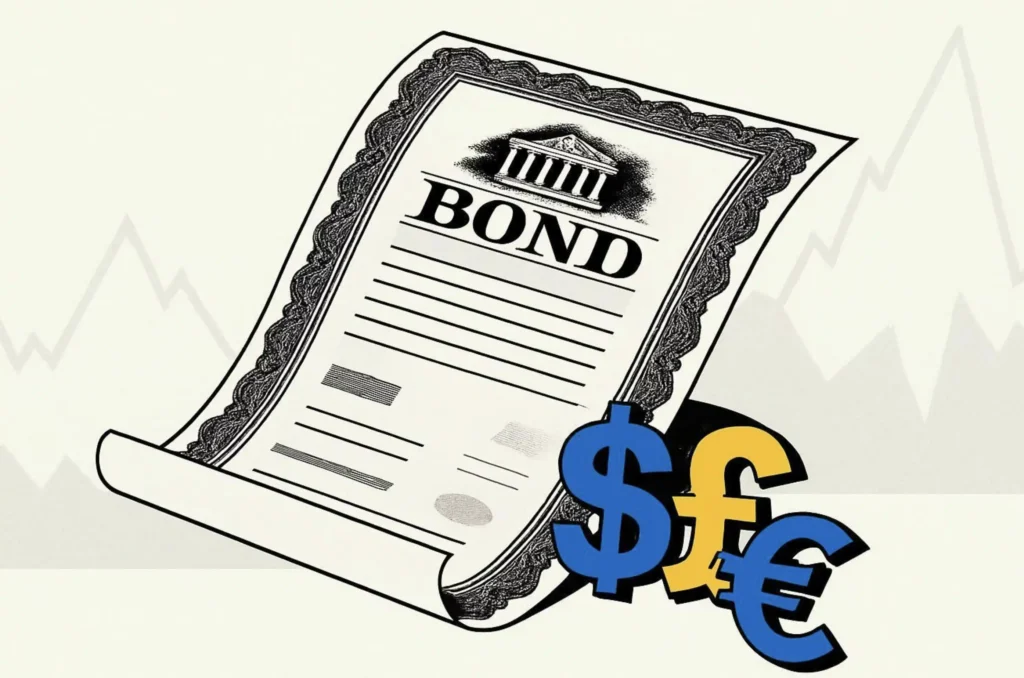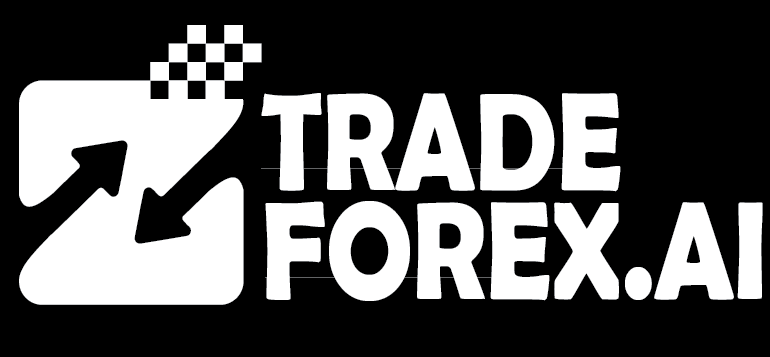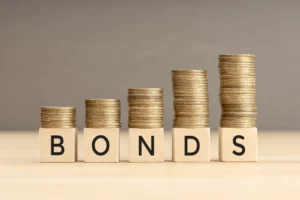In 2025, investors everywhere are rethinking what it means to build a stable and profitable portfolio. After years of market swings and unpredictable headlines, the focus is shifting from short-term speculation to long-term balance. Stocks and commodities still play their part, but many are rediscovering the quiet strength of fixed-income investments. Bonds, once dismissed as dull or overly cautious, have become essential again as a smart way to protect capital, earn steady returns, and bring structure to uncertain times.
The financial environment is changing fast. Interest rates are no longer racing upward; inflation is cooling, and corporate credit conditions are finally easing. Together, these shifts are shaping bond market trends in 2025, giving both new and experienced investors a chance to rethink strategy. Bonds today are more than safe havens; they’re strategic assets that can grow, adapt, and stabilise portfolios across market cycles.
Understanding the different types of bonds in 2025 has never been more valuable. Each comes with its own purpose: government bonds for security, corporate and municipal bonds for income, and green or ESG bonds for those who want their investments to make a broader impact. Some deliver predictable interest; others offer growth potential or inflation protection.
Whether you’re planning for retirement, diversifying away from equities, or simply aiming for steadier returns, knowing how these bond types work together can change the way you invest.
Let’s explore the 10 types of bonds that are helping investors strengthen portfolios and find stability in 2025’s evolving market.

1. Government Bonds—Safe Haven for Steady Growth
Government bonds remain the cornerstone of global bond markets. Issued by national governments, they are among the safest fixed-income investments because they are backed by sovereign credit. Investors choose them for reliability and predictable income through periodic interest payments.
In 2025, government bond yields are stabilising after previous rate hikes. For example, U.S. 10-year Treasury notes now yield around 4.3%, while Indian 10-year G-Secs trade near 7%. This offers investors steady income with minimal credit risk.
The bond market trends of 2025 also show growing interest in sovereign digital bonds. Nations like Singapore and the U.K. are adopting blockchain-based issuance platforms to enhance transparency and liquidity. For conservative investors, these innovations make government bonds both safe and accessible.
Government bonds act as the backbone of diversified portfolios, especially when global markets remain unpredictable. They stand among the best bonds to invest in in 2025 for investors focused on capital preservation and long-term growth.
2. Corporate Bonds—Reliable Income with Growth Potential
Corporate bonds are issued by companies to raise capital for business operations, acquisitions, or debt refinancing. They offer higher yields than government bonds but come with varying levels of credit risk.
In 2025, corporate debt markets are expanding rapidly, particularly in technology, healthcare, and renewable energy sectors. Companies such as Tesla and Apple have issued green corporate bonds to finance clean projects, attracting investors seeking sustainability with returns.
Credit ratings are key when selecting corporate bonds. Investment-grade bonds (AAA to BBB) provide safety and steady income, while high-yield corporate issues offer higher returns for those willing to accept additional risk.
Corporate bonds balance stability and performance, making them integral among the different types of bonds in 2025. They serve investors who want income visibility and modest capital appreciation, especially when stock market volatility remains high.
Institutional portfolios are heavily weighted toward high-quality corporate bonds this year, reflecting the renewed appeal of yield over speculation.
3. Municipal Bonds—Smart Tax-Advantaged Investments
Municipal bonds, often called “munis,” are issued by local governments or municipalities to finance public infrastructure projects like schools, roads, and clean energy systems.
In 2025, municipal bonds are gaining renewed attention from investors seeking fixed-income investments that also provide tax benefits. In countries such as the United States, interest earned on many municipal bonds is exempt from federal taxes—a major advantage for high-income earners.
The bond market trends of 2025 highlight a rise in green municipal bond issuance. Cities like Los Angeles and London are issuing climate-focused muni bonds to fund sustainable transport and waste management systems.
Investors choosing municipal bonds are not only earning stable returns but also contributing to community development. Their risk is typically lower than corporate debt, and their social impact adds long-term value. For individuals balancing financial goals with purpose, municipal bonds remain among the best bonds to invest in in 2025.
4. Treasury Inflation-Protected Securities (TIPS)
TIPS, or Treasury Inflation-Protected Securities, are U.S. government-issued bonds that adjust their principal based on inflation. This makes them one of the most effective fixed-income investments for preserving purchasing power.
As inflation trends fluctuate globally in 2025, TIPS have emerged as a key tool for investors wanting real, inflation-adjusted returns. When consumer prices rise, TIPS’ value increases; when inflation falls, they adjust accordingly.
For instance, an investor holding $10,000 in TIPS may see the principal grow to $10,400 if inflation climbs 4%. This automatic adjustment maintains real income and shields portfolios from currency erosion.
Many pension funds and long-term investors are increasing their TIPS exposure as part of a broader defensive strategy. Their reliability makes them an integral part of bond market trends in 2025, and they remain one of the best bonds to invest in in 2025 for stability during uncertain economic phases.
5. Zero-Coupon Bonds – Discipline and Predictable Returns
Zero-coupon bonds differ from traditional bonds because they do not pay regular interest. Instead, investors purchase them at a discount and receive full face value at maturity.
In 2025, zero-coupon bonds have regained popularity among those planning for future milestones such as education, home purchases, or retirement. For example, an investor might buy a bond for $700 today and receive $1,000 at maturity—a clear, predetermined gain.
These bonds are ideal for disciplined, long-term investors who can hold until maturity. However, their sensitivity to interest rate changes means prices fluctuate more than standard bonds.
Despite that, their certainty of payout makes them attractive within the different types of bonds in 2025, especially for individuals preferring predictable growth without ongoing reinvestment decisions.
As financial literacy increases, more retail investors are incorporating zero-coupon bonds into portfolios to balance risk and long-term return potential.
6. Convertible Bonds—Bridging Debt and Equity
Convertible bonds are hybrid securities that start as debt but can later convert into equity shares of the issuing company. This feature provides dual benefits: interest income and potential capital appreciation if the company performs well.
In 2025, convertible bonds are trending strongly in the tech and renewable energy sectors. For instance, a startup might issue bonds convertible into stock once its valuation exceeds a certain threshold. Investors gain early exposure to potential growth while limiting downside risk.
These instruments appeal to investors looking for innovation-driven returns without fully committing to equities. Their ability to combine fixed income stability with upside participation makes them vital among the best bonds to invest in in 2025.
Convertible bonds also enhance portfolio flexibility, allowing investors to pivot between defensive and growth strategies depending on market conditions. Their hybrid nature perfectly fits the bond market trends of 2025, where adaptability is essential.
7. Callable Bonds—Yield with a Strategic Twist
Callable bonds offer higher yields but come with a unique feature: the issuer can “call back” the bond before maturity, usually when interest rates fall.
In 2025, callable bonds remain popular among utility companies, banks, and insurers. For example, a bond issued at 6% could be redeemed early if the issuer can refinance at 4%. This helps issuers save on interest expenses while rewarding investors with initially higher returns.
For investors, callable bonds provide income but require careful evaluation of the call schedule and yield-to-call rate. They are best suited for those who can handle reinvestment uncertainty.
Callable bonds stand among the different types of bonds in 2025 that offer premium returns for moderate risk-takers. When chosen wisely, they can add meaningful yield enhancement to any diversified portfolio.
8. Foreign Bonds—Expanding Geographic Diversification
Foreign bonds provide exposure to international markets, allowing investors to benefit from higher yields and different economic cycles. These are issued by foreign governments or corporations and denominated in local currencies.
In 2025, global investors are showing renewed interest in emerging-market foreign bonds. Economies like India, Brazil, and Indonesia offer yields ranging between 6% and 8%, compared to 3% to 4% in developed markets.
Investors are using foreign bonds to diversify income streams and reduce dependence on domestic markets. However, currency fluctuations can impact returns. A strengthening local currency benefits investors, while depreciation may reduce gains.
Many international bond ETFs now simplify global exposure by pooling bonds across countries and maturities. This makes foreign bonds one of the best bonds to invest in in 2025 for those aiming for growth through international diversification.
9. Green and ESG Bonds
Green and ESG (Environmental, Social, and Governance) bonds are transforming how investors view fixed income. They fund projects that support clean energy, low-carbon infrastructure, or social welfare initiatives.
In 2025, ESG-linked debt is at record highs, surpassing $5.5 trillion globally. Governments and private companies are issuing green bonds at an unprecedented pace to meet sustainability goals. For instance, the European Investment Bank and India’s Power Finance Corporation have launched major green bond programs to fund renewable energy grids.
These bonds appeal to investors who want measurable environmental impact alongside stable returns. They fit perfectly within modern bond market trends in 2025, where transparency and purpose are driving investor choices.
Green and ESG bonds have moved beyond niche investing—they are now central to responsible wealth management strategies. Their inclusion in portfolios strengthens long-term performance while aligning finance with positive global outcomes.
10. High-Yield Bonds—Opportunity for Aggressive Investors
High-yield bonds, or junk bonds, are issued by companies with lower credit ratings. They offer higher returns to compensate for elevated risk.
In 2025, improving global growth and lower default rates have revived the high-yield segment. Bonds from industries such as renewable energy, telecom, and emerging-market finance are performing especially well. For instance, high-yield Indian corporate bonds offer 9–11% returns, outpacing inflation and equity dividends.
However, these bonds demand careful analysis. Investors must evaluate company fundamentals, debt coverage ratios, and market conditions. Diversifying across issuers or using managed funds helps mitigate risk.
High-yield bonds are not for everyone, but when allocated strategically, they can significantly enhance total portfolio performance. They remain one of the different types of bonds in 2025 that combine growth opportunity with income—ideal for experienced investors seeking higher yield in a balanced approach.
Choosing the Right Mix of Bonds in 2025
Building a strong portfolio in 2025 requires more than choosing one bond category—it’s about creating a balanced mix that aligns with your financial goals, time horizon, and risk tolerance. The modern investor understands that no single bond type performs best across all market conditions. Instead, success lies in diversification—blending different maturities, issuers, and sectors to reduce risk and capture stable returns.
The bond market trends of 2025 indicate that moderate interest rates and steady economic recovery are encouraging investors to revisit allocation strategies. Fixed income portfolios are becoming more dynamic, focusing not only on yield but also on sustainability, inflation protection, and geographic diversification. Investors are now thinking beyond traditional government securities and exploring emerging opportunities in ESG, foreign, and corporate segments.
Here’s a structure many professionals follow to maintain balance and long-term growth:
- Government and municipal bonds provide a stable foundation with reliable returns, low default risk, and potential tax benefits—ideal for capital preservation.
- Corporate and foreign bonds enhance portfolio yield and introduce exposure to global markets and industries, balancing local performance cycles.
- TIPS and green bonds serve as inflation hedges while aligning portfolios with sustainable and socially responsible investing goals.
- Convertible and high-yield bonds add growth potential and flexibility, appealing to investors willing to accept slightly higher volatility for greater income.
- Zero-coupon bonds offer predictable, lump-sum payouts at maturity, perfect for long-term planning such as education or retirement goals.
With fixed-income investments evolving rapidly, exchange-traded funds (ETFs) now make diversification easier than ever. Multi-bond ETFs allow even small investors to access diverse global opportunities with low cost and high liquidity. Combining these categories smartly ensures both resilience and adaptability, two traits every successful portfolio needs in 2025 and beyond.
Final Outlook
The bond landscape in 2025 feels more alive and opportunity-driven than at any time in the past decade. Bonds have evolved from quiet, conservative holdings into strategic tools that help investors build balance, stability, and purpose. Whether you prefer safety or measured risk, understanding the types of bonds available today allows you to make smarter, more confident financial decisions.
Traditional instruments such as government, corporate, and municipal bonds continue to serve as reliable anchors. They protect portfolios when equity markets turn uncertain and generate steady cash flow that supports long-term plans. At the same time, TIPS and green bonds have introduced new dimensions of value preserving purchasing power and supporting sustainability goals that align with modern investor priorities. For those seeking more movement, convertible, callable, and high-yield bonds bring the chance to pursue growth while staying grounded in the discipline of fixed-income investing.
Across global bond market trends in 2025, one pattern stands firm: diversification defines durability. No single bond can perform in all conditions, but a thoughtful mix creates consistent strength. Investors who spread exposure across maturities, sectors, and geographies find themselves better positioned to adapt as economies shift and interest rates settle.
Choosing the best bonds to invest in 2025 is ultimately about more than yield. It’s about building resilience, ensuring steady income, and securing lasting financial stability. In a world that rewards patience and prudence, bonds continue to stand as dependable partners—quietly compounding value, preserving wealth, and keeping portfolios balanced through every market phase.
Read here to learn more about “Silver Price Drop 2025: What’s Driving the Sudden 17% Fall“

I’m Chaitali Sethi — a seasoned financial writer and strategist specializing in Forex trading, market behavior, and trader psychology. With a deep understanding of global markets and economic trends, I simplify complex financial concepts into clear, actionable insights that empower traders at every level. Whether it’s dissecting winning strategies, breaking down market sentiment, or helping traders build the right mindset, my content bridges the gap between information and implementation.




